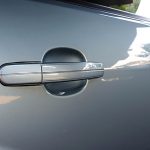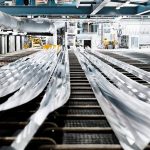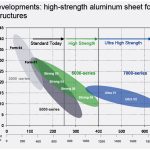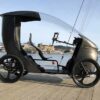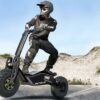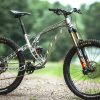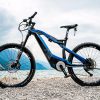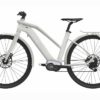7000 series aircraft alloys are becoming popular in automotive industry
14.09.2021
4707
- Passenger Door
Aleris demonstrated also how the use of 3.5 mm thick 7000 aluminum alloy in the production of car struts allowed them to reach the same crash performance as UHS steel with a 2-mm boron, but led to a weight saving of 40%.
7075 is one of the best-known aviation aluminum alloys. This was developed by Sumitomo Metal of Japan in 1935. In the production of aircraft, the aluminum alloy 7075 began being used, beginning with the Mitsubishi A6M Zero deck fighter from 1940. This plane became well-known for its lightness, agility and very considerable range. Since then the 7075 has been used widely for the production of structural airplane parts [1].
Perhaps in the post-war years, it was aluminum alloy 7075 that provided the basis for the Dujee bicycle, which was developed by engineers of Mitsubishi Heavy Industries [2]. This model was characterized by its strong and light frame, the elements connected to each other by rivets, similar to the fighters made by the Japanese earlier. The time of the 7000 series of aluminum alloys, however, cannot be claimed to have passed. Today, alloy 7075 is used by Avial Bikes to build bicycle frames with no welding, many create their own bicycle frameworks from sets of alloy 7005 tubes, and for example, the manufacturer Duratec uses alloy 7020 for this [3].
In addition to alloys 5052, 6061, and 2024, aluminum 7075 is widely used in the aerospace industry [4]. This cold-deformable alloy is the toughest of the Aluminum alloys, or as durable as some items made from low-grade Steel, yet it is much lighter. The 7075 alloy also has the best corrosion resistance and stress cracking resistance. it has good anodization capability, thus aiding it in its resistance to electroplating corrosion. Nevertheless, 7075 is thought to be a poor selection for welding, although it can still be joined by resistance welding [5].
Products where strength is critical, like climbing equipment, climbing equipment, and a number of bicycle components, are commonly made from 7075 aluminum. Further uses include gears, parts, shafts, automotive parts, French PGM precision weapons and U.S. Armed Forces M16 rifles [5]. Bradley combat vehicle components are manufactured in two aluminum alloys: the 7xxx series and the 5xxx series [6]. Alloy 7075 T6 is used in General Motors’ C7 Corvette Stingray in the forward deformation zone. The GM engineers claim that it folds up like an accordion on impact, efficiently soaking up the impact energy [7].
Over the last few years, use of aluminum in cars or light trucks has been rated at the fastest growth rate of any use segment. The WardsAuto and DuPont Automotive survey also confirmed that aluminum is the preferred material of choice for designers and engineers to comply with the expected fuel and emissions standards by 2025.
Within the electric vehicles (EV) market, an essential determinant in consumer preference, besides high but nonetheless falling costs, is range. In order to reach high power reserve for a given battery size and weight, the weight of the EV needs to be reduced. The e-Golf contains 129 kg of aluminum and the Leaf 171 kg, according to A2mac1 Automotive Benchmarking, while the luxury model Tesla S contains 661 kg of this metal [7].
Along with the fact that weight has come to play a crucial role, car producers equally interested in the good strength of the metal and its resistance to corrosion. By looking at the variety of new aluminum alloy innovations developed by some of the large manufacturers (Novelis, Constellium, Norsk Hydro, Alcoa, etc.), we can say with certainty that obtaining a thin, easy and strong aluminum sheet will not become a problem within the next few years [8].
For instance, as recently as Novel presented the Advanz 7000 series of high-strength aluminum alloys. Novelis Advanz 7000 series is two to three time stronger than any other automobile grade aluminum and, can also be used to manufacture parts such as bumper or door beam systems. “High-strength 7000 Series aluminum alloys have been designed and used in aerospace for decades,” said Duane Bendzinski, director of technology for Novelis [6]. Novelis is seeking ways to make those alloys usable for the automobile industry, according to him.
As the leading supplier to the aluminum sheet industry, Novelis has worked with many global carmakers and their most innovative vehicles, such the Ford F-150, Range Rover and Jaguar XE. Novelis has been a pioneer in the design of aluminum alloys, including 6111, 6016 and 5754.
The 7000-series is more difficult to mold, but it offers high mechanical properties – around 600 MPa, compared with 300 MPa for the 6000-series – and enables carmakers to make more weight reducing. In its presentation, for example, Aleris demonstrated that using a 3.5 mm thick 7000 series aluminum alloy in manufacturing struts provided the same collision safety characteristics as UHS steel with a 2-mm boron, but reduced weight by 40% [9].
Norsk Hydro presented three different new aluminum alloys (5083, 5456, and 7020). The alloys are designed especially developed for the heat forming of aluminum sheets in the fabrication of complicated automotive components. These have higher elongation, attain a high tensile breaking strength after molding and reduce cycle time compared to known contemporary alternatives.
Alcoa EverCast C862F (Al-Zn-Mg) is also part of the 7xxx series. Silicon particle-free, which gives it superior properties. As a result, it has significantly better tensile strength and fatigue strength (400 MPa) than conventional A356 alloy and properties equal to or better than those of most 6xxx alloy products.
Al-Li (3rd generation aluminum-lithium) alloys, which are widely used in aerospace applications, may also become an essential part of different vehicle components due to their superior blend of low density, high strength, toughness and damage resistance. Lastly, the so called ” super aluminum ” advanced by Nano Al is also worth mentioning. Like steel, this super metal is derived from a patent-pending process of introducing nano crystals, which is able to improve the alloy’s strength by 20% and, eventually, lead to a weight saving in the final product.
Lowering the weight and fuel usage has been the key for every vehicle manufacturer to become more marketable. It is considered that if the vehicle weight is decreased by 50 kg, per liter of fuel, travel can be increased by 2 km [10]. Thus, it is reasonable to use a thin, but stronger aluminium sheet. The 7000 series alloys have not been used in the automotive sector historically because they lack the ductility necessary to impart a complicated shape. Over the last year or two, a range of higher formability grades have developed, and many automotive companies are considering using them in future models [11].
Approximately 90% of all the aluminum used in a vehicle can be reprocessed once it has reached the end of its life. Moreover, the required energy input to recover aluminum is only 5% as compared to that required to recover this element from ore [12]. Selecting lightweight and strong 7000 series aluminum aluminum alloys could cut the total weight of the vehicle by 40-50% with an increased lifespan of up to 25+ years. The only question is, how would such a long-life car be viewed by the potential consumers?
Look in detail:
[1] 7075 aluminium alloy – https://en.wikipedia.org/wiki/7075_aluminium_alloy
[2] Cycling duralumin frames? Been there? Got any? Will be? – https://avialbikes.com/news/cycling-duralumin-frames-been-there-got-any-will-be/
[3] Duratec frames https://www.duratec.cz/en/techinfo/materials-used/aluminum-alloy-7020t6/
[4] Aluminum Alloys for Aerospace – https://www.industrialmetalsupply.com/blog/aerospace-aluminum
[5] 7075 Aluminum – https://www.hydro.com/en-us/profiles/7075-aluminum/
[6] Novelis introducing high-strength 7000-series aluminum alloys for automotive industry – https://www.greencarcongress.com/2015/08/20150818-novelis.html
[7] Latest Trends for Aluminium Demand in Automotive Industry – https://www.spotlightmetal.com/latest-trends-for-aluminium-demand-in-automotive-industry-a-736213/
[8] Aluminium Alloys in the Automotive Industry: A Handy Guide – https://aluminiuminsider.com/aluminium-alloys-automotive-industry-handy-guide/
[9] Aluminum’s Relentless Rise in the Automotive Sector – https://agmetalminer.com/2017/11/27/aluminum-automotive-sector-aleris-novelis-6000-7000-series-alloy/
[10] The application of aluminum alloy in automotive industry – http://www.aluminiummanufacturer.com/blog/the-application-of-aluminum-alloy-in-automotive-industry/
[11] Sheet aluminum alloys for cans and cars – https://www.thefabricator.com/thefabricator/article/metalsmaterials/sheet-aluminum-alloys-for-cans-and-cars
[12] Why are Aluminum Alloys Used in the Auto Industry? – https://www.howardprecision.com/why-are-aluminum-alloys-used-in-the-auto-industry/

